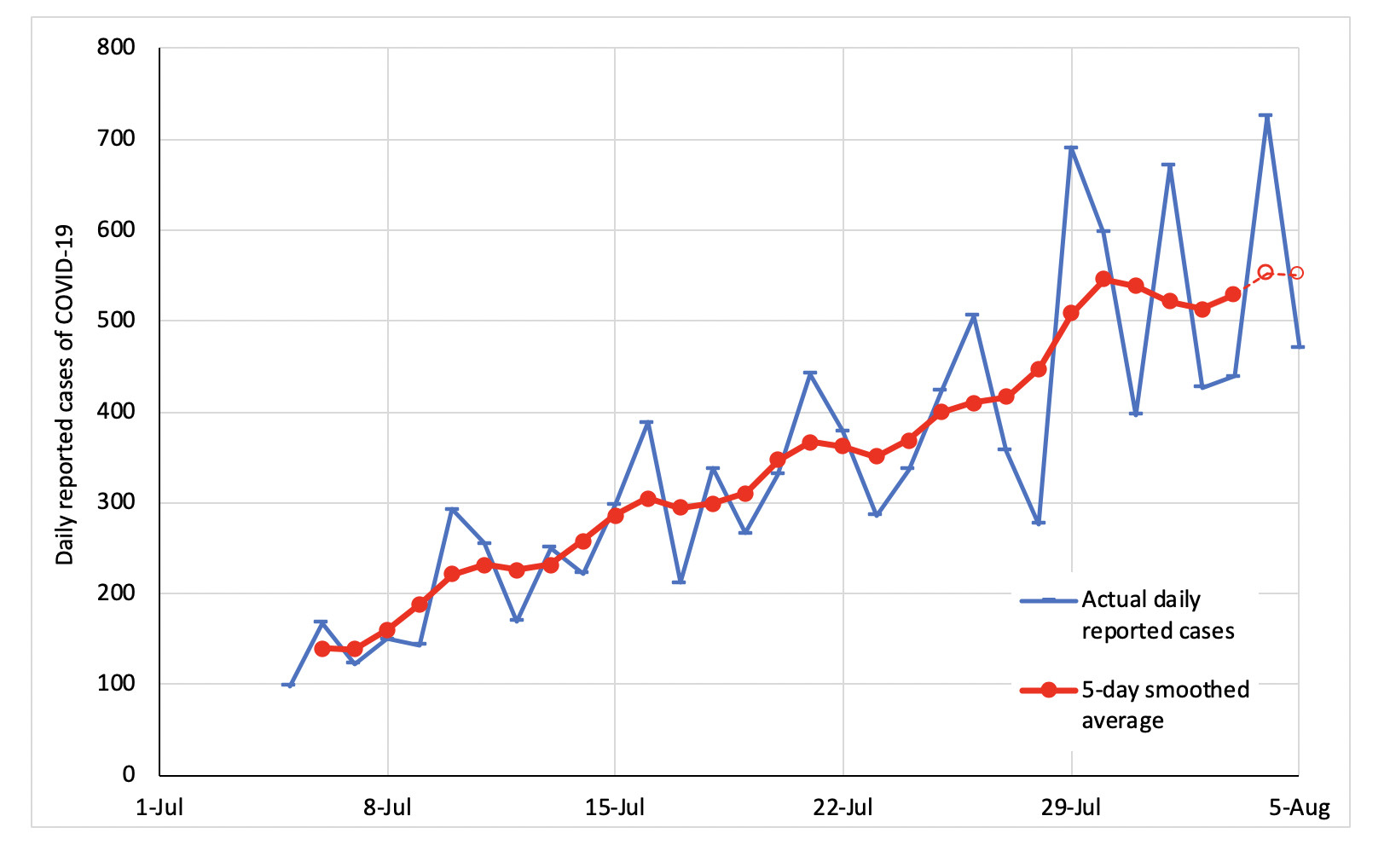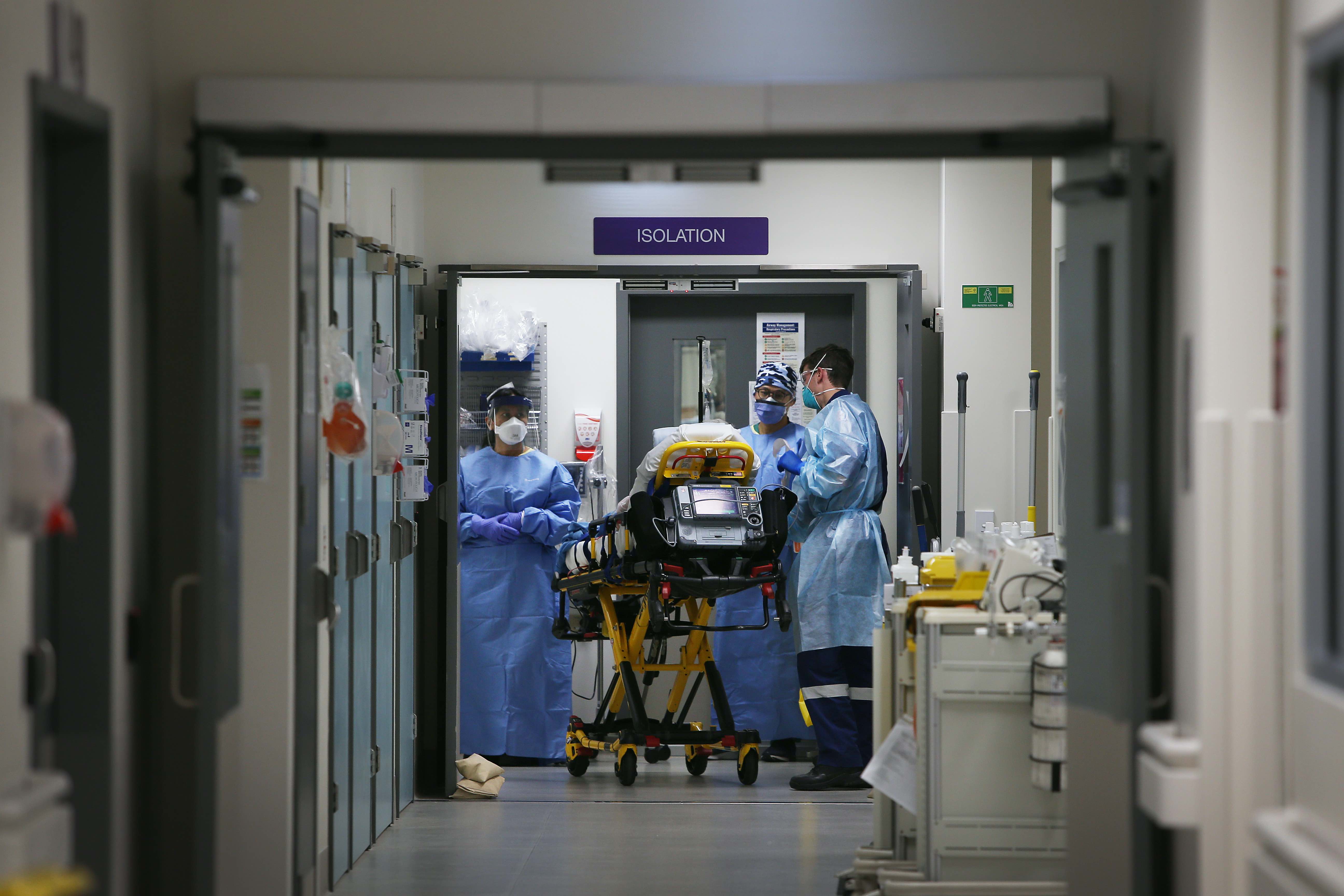
Health & Medicine
Bonus Episode: Life Beyond Coronavirus: The Expert View

It may feel like the number of new COVID-19 cases in Victoria are a rollercoaster ride, going up and down, but there’s a reason for this. And it could mean some good news
Published 6 August 2020
The daily COVID-19 cases in Victoria over the last week have been a rollercoaster ride of wild variation, with far more variation than would be simply due to ‘chance’.
So, what is happening? The short answer is, there must be batching.

Batching refers to the fact that at one or more steps along the path, notifications or tests, are batch-processed. It may mean that a large batch of notification of contacts comes in as one ‘data drop’. Or a large batch of swabs are sent to the lab at the same time.
And probably, most importantly, the batching of the laboratory test results when they go back to the Victorian Department of Health and Human Services (DHHS).
What this means in practice is that the daily numbers are up and down by more than chance variation in the ‘true’ infection rate per day.

Health & Medicine
Bonus Episode: Life Beyond Coronavirus: The Expert View
A report in The Australian has a model of COVID-19 case projections which suggest we could have more than 1000 cases per day in Victoria for some time. The source for this report hasn’t been disclosed, and (critically) the assumptions of the modelling aren’t stated.
A close inspection of the graph in The Australian shows an increasing trend in numbers over the last week that is inconsistent with the (admittedly rollercoaster-like nature) of Victoria’s actual numbers.
So, let’s try and clear this up, and make some sense of it.
With just random variation we need to smooth the data. But this is even more essential with the apparent batching.

To do this, I have used a five-day smoother average. Specifically, using the formula: (Casesᵗ-² + 2 x Casesᵗ-¹ + 3 x Casesᵗ + 2 x Casesᵗ⁺¹ + Casesᵗ⁺² ) / 9
So, using plain English to explain this, for the day of interest (ᵗ) that day’s case numbers receive 1/3 of the weight, (3/9); the cases a day before and a day after receive a weight of 2/9; and the cases two days before and after receive a weight of 1/9.
All good so far.

Health & Medicine
Victoria – are you up for elimination?
Where it gets tricky is for yesterday and today – as tomorrow and the day after haven’t happened yet. So, relying on past data only, we can make today and yesterday’s estimates tentative and subject to some change depending on what actually happens tomorrow and the next day.
The graph above is what it looks like – which includes the 471 cases reported on Thursday. It’s worth noting the wild variations in the daily counts, but the much smoother pattern for the five-day average.
Secondly, the last two data points in my five-day average are deliberately open circles and dashed lines as they are tentative, given the next two days of numbers.
That all said, we can call this good news. It looks like the curve turned at 30 July.
But more importantly, it makes sense.

Why? Because 30 July was just over a week after mandatory mask wearing was put in place (i.e. just over the virus’s average incubation period).
Mask wearing appears to have bent the curve, consistent with expectation. Or put another way, the numbers would be higher now without mask wearing, and much higher again without Stage 3 restrictions.
Now, the big question is what will the numbers be in the next week or so? Well, the honest answer is we don’t know.

Health & Medicine
The science behind the search for a COVID-19 vaccine
I would tentatively suggest we’ll probably see another bend in the curve, downwards, 10 days or so after Victoria began its Stage 4 restrictions today. But it may be a bit earlier as a result of some people adopting Stage 4-like behaviours a bit earlier.
There is one thing that does concern me, though, and may make a fool of my predictions.
That is that we, here in Victoria, essentially have many epidemics happening at the same time, and out of phase.
At the moment, there is an epidemic among essential workers in aged care and, perhaps, in other essential industries. These may develop further given they are still ‘out and about’ during Stage 4.
On this, we’ll just have to wait and see.

Nevertheless, Stage 4 restrictions will drive the caseloads down for most of us. Moreover, when it drives the numbers down to less than 200 or so a day, it will enable our contact tracing teams to get back into a zone where they can be more effective – and not overwhelmed.
This, then, raises the issue – how low can we go in six weeks? Again, we don’t know.
But in two to three weeks’ time, we will have a better idea.
Maybe then we can discuss whether elimination still remains an achievable goal, or whether all of us are going to have to learn to live with the virus circulating at some level until we (hopefully) get a vaccine.
Banner: Getty Images